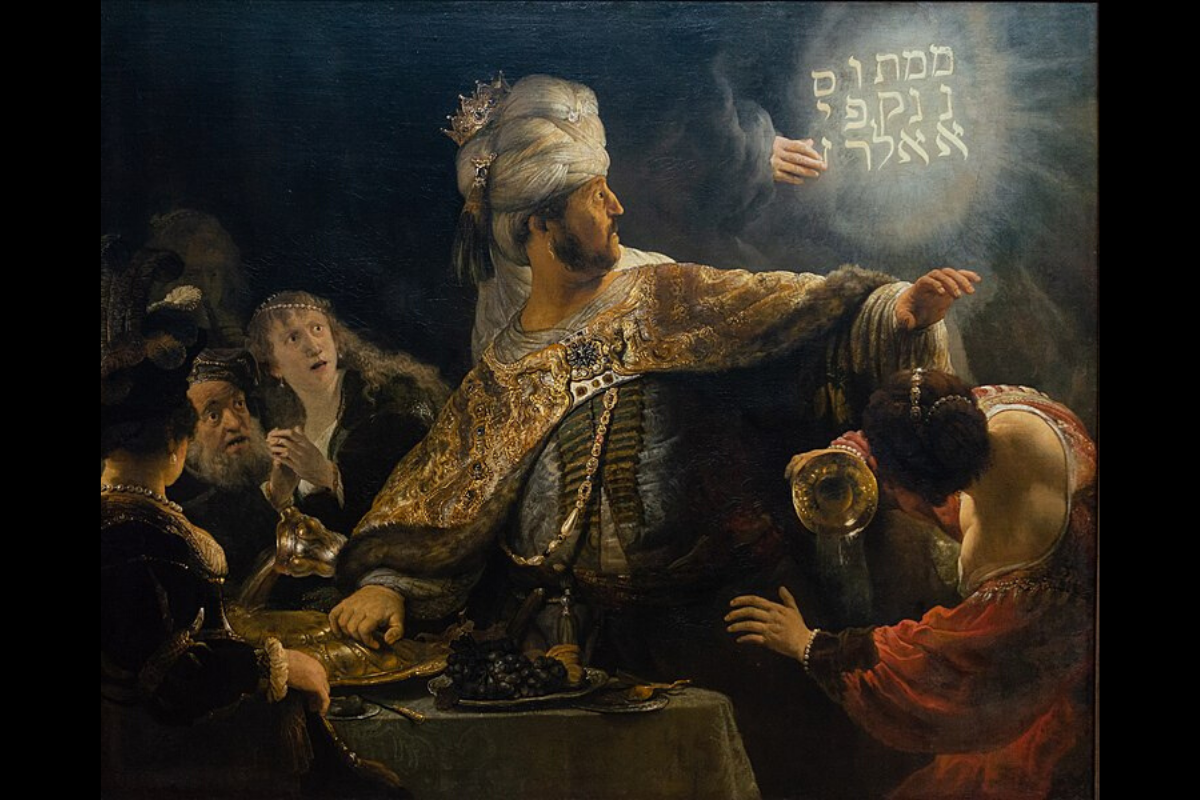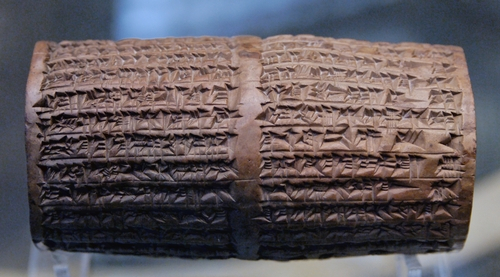Figure 1 – Rembrandt, Belshazzar’s Feast, 1635, (National Gallery, London). The Writing on The Wall.
Daniel chapter 5 records the well-known story of Belshazzar and the drunken, idolatrous mockery of God with the defilement of the vessels of the temple, resulting in the “Writing on the wall”, being “weighed in the balance” by God and “found wanting”. This signified God’s judgement, the fall of the city of Babylon and resulted in the death of Belshazzar the very same night. Thus, the Babylonian empire effectively came to an end.
The fall of Babylon is well attested through secular historical records as having taken place in 539 BC. Cyrus the Great, king of Medo-Persia, broke through the supposedly impenetrable walls of Babylon by diverting the river flowing into the city so that his soldiers could enter through the river duct. Historical records show that this invasion was made possible because the entire city was involved in a great feast, exactly as described in the Bible.
However, according to the list of Babylonian kings as accepted by secular historical accounts, the last king of Babylon is recorded as being Nabonidus, who reigned from 556-539 BC. Therefore, seeing there was no mention of Belshazzar in the list of kings, historians cast doubt on the authenticity of Daniel’s account. As a result, the Bible critics were quick to relegate the whole episode as recorded in the book of Daniel as merely fable.
Discovery of the Nabonidus Cylinders
Despite popular belief that Belshazzar did not exist, in 1854 the British Consul in Basra (Sir Austen Henry Layard) discovered four identical clay cylinders at the corners of the temple of the moon god sin at the excavations of the city of UR. On these cylinders, the king offered a prayer for himself and ”Belshazzar my firstborn son, the offspring of my heart.”
Since then, more inscriptions have been discovered referring to Belshazzar as “the crown prince”.
It is now known that Nabonidus was away from Babylon with his army in Arabia for around ten years and he put Belshazzar on the throne during this period as co-regent. It is clear that Belshazzar was acting as co-regent in Babylon when the Persians broke into the city.
This fact also explains a comment in Daniel 5:29 that as a reward for interpreting the ‘writing on the wall’ Daniel was made ‘the third highest ruler in the kingdom.’ Nabonidus was number one, Belshazzar was number two and Daniel could only be number three.
Time and again, when attempts are made by the critics to ridicule the Bible, doubting its historical accuracy, evidence emerges that vindicates the veracity and integrity of the Bible. It is the inspired Word of God (2 Timothy 3:16-17). Archaeology (unearthing the past) has provided numerous physical evidences that verify Biblical accuracy, silencing the critics and doubters.
Figure 2 – Nabonidus Cylinder, British Museum, London
A Lesson from Archaeology
Nelson Gleuk, famous Jewish Archaeologist (1900-1971), declared the following …
“It may be stated categorically that no archaeological discovery has ever controverted a Biblical reference. Scores of archaeological findings have been made which confirm in clear outline or exact detail historical statements in the Bible. And, by the same token, proper evaluation of Biblical descriptions has often led to amazing discoveries “

